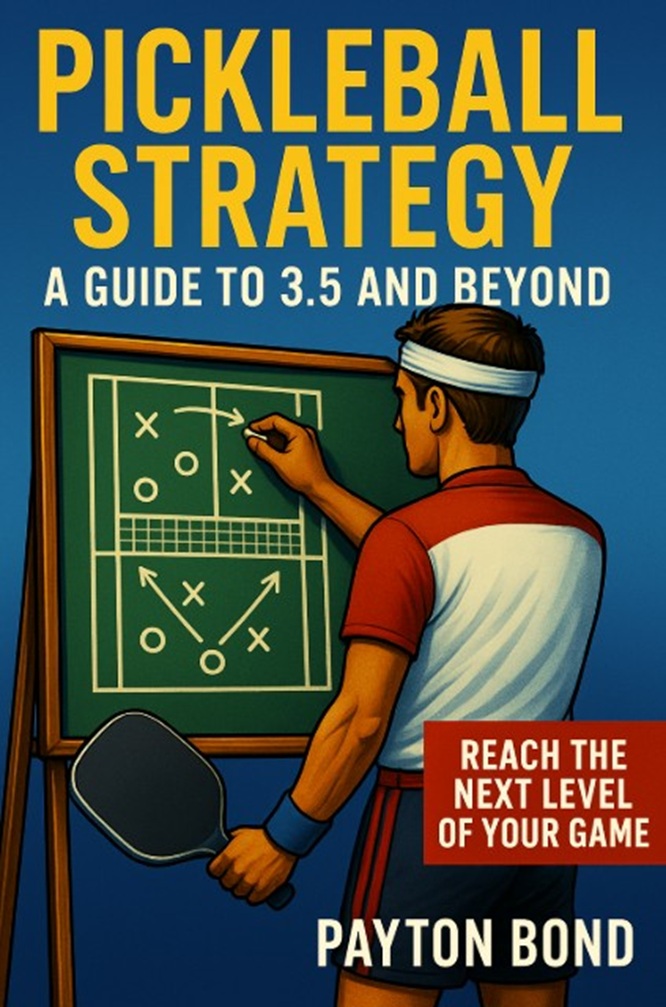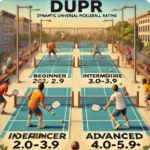
Misjudging Your Pickleball Rating: Are You Really a 3.5?
It’s common for players to overestimate their pickleball skill level, thinking they’ve reached the coveted 3.5+ mark when they might still be missing key elements of the game. Don’t worry, it’s not just you. Ambition can blur the line between where you are and where you want to be.
It is important to understand that 3.5+ is a stage of strong skill development, but not yet the refined consistency of a 4.0 player. Understanding the true markers of a 3.5+ player can help you honestly assess your game.
1. Consistency in Execution
A genuine 3.5+ player demonstrates consistent execution in serves, serve returns, and dinks. This means getting serves and returns in play reliably and using dinks to maintain rallies. If frequent unforced errors in these areas still occur, especially under pressure, you’re not quite there. Consistent execution is more important than occasional perfect shots. A 3.5+ player can perform these skills consistently across an entire match.
2. Third-Shot Drop and Soft Game Control
The third-shot drop is a key skill for a 3.5+ player, but it doesn’t have to be perfect. You should be developing the ability to hit a reliable third-shot drop and use a soft game to reset the ball when needed. If you rely mostly on power shots without a strong soft game, this is a red flag. Struggling with consistent third-shot drops or resetting fast exchanges means it’s time to prioritize these skills.
Some may argue that the third-shot drop is becoming less critical as the game evolves, with more players using aggressive drives followed by fifth-shot drops or resets. While this may be true at higher levels, the third-shot drop remains a fundamental strategy for players at the 3.5+ level. Developing consistent third-shot drops builds a strong foundation for your soft game, making it easier to add drives with fifth-shot drops and resets as your skills advance.
In the end, you will need a mix of third-shot drops, fifth-shot drops, and resets to advance your game. But it all starts with mastering the third-shot drop.
3. Strategic Court Positioning
A 3.5+ player is learning when to transition from the baseline to the net, how to move in sync with a partner, and how to cover angles effectively. If you often rush the net too soon or leave gaps in your coverage, you’re making it easier for opponents to win points.
4. Shot Selection and Game Awareness
Smart shot selection is a defining trait of 3.5+ players. This means recognizing when to attack, dink, or reset a rally. On defense, a 3.5+ player may not always succeed in countering a strong shot but should understand the importance of trying to hold ground at the kitchen line and aiming to keep opponents back. If you back up unnecessarily or miss chances to neutralize strong shots, this is an area for growth.
5. Communication and Partner Play
Effective doubles play requires good communication. At the 3.5+ level, you should be comfortable discussing strategy with your partner, making clear calls, and avoiding those awkward moments when both players go for the same shot. Miscommunication should be rare.
6. Handling Pressure and Mental Focus
A 3.5+ player is developing the ability to stay calm under pressure. It’s easy to play well in practice, but games are different. If nerves or frustration cause you to make avoidable mistakes, mental focus needs attention. The goal is to stay composed and execute your skills in competitive situations.
7. Adapting to Different Playing Styles
Adaptability is a sign of a true 3.5+ player. If you always use the same approach, such as driving every shot or relying only on drop shots, you’re limiting your game. Recognizing when to change tactics based on your opponent’s style is a valuable skill to develop.
The Big Jump to 4.0
It is important to recognize the significant difference between 3.5+ players and true 4.0 players. 3.5+ players understand the game well and are strong competitors, but they are still developing consistency, court awareness, and strategic shot selection. In contrast, 4.0 players have refined these skills to a higher level. The difference isn’t just about having the skills. It is about executing them with much greater consistency and confidence. A 4.0 player will make fewer mistakes, maintain better control of rallies, and adapt more quickly to different opponents.
Conclusion
Reaching the 3.5+ skill level isn’t just about mastering the mechanics of the game. It is about consistency, strategy, teamwork, mental focus, and adaptability. Take a step back and assess your strengths and weaknesses honestly.
True growth comes from identifying areas for improvement and working to refine them.
So, are you really a 3.5+? If not yet, don’t worry, you’re on the path. With dedication and a willingness to learn, you’ll get there. And when you do, it won’t just feel like progress. It will feel like victory.
Check out Payton Bonds new eBook!
Pickleball Strategy – A Guide to 3.5 and Beyond
See it on Amazon.

👤 Follow Payton Bond
All Star and Top Contributor on multiple Facebook Pickleball Forums.
Contributor at TheKitchenPickle.com.
Visit Payton Bonds Facebook Page




